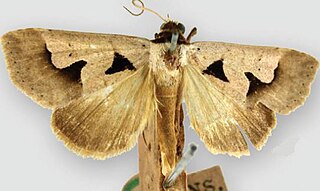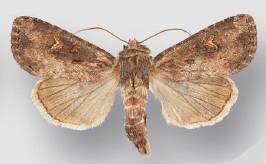
The sora is a small waterbird of the rail family Rallidae, sometimes also referred to as the sora rail or sora crake, that occurs throughout much of North America. The genus name Porzana is derived from Venetian terms for small rails, and the specific carolina refers to the Carolina Colony. The common name "Sora" is probably taken from a Native American language.

The willow flycatcher is a small insect-eating, neotropical migrant bird of the tyrant flycatcher family native to North America.

The Virgin River is a tributary of the Colorado River in the U.S. states of Utah, Nevada, and Arizona. The river is about 162 miles (261 km) long. It was designated Utah's first wild and scenic river in 2009, during the centennial celebration of Zion National Park.

The Toltec fruit-eating bat is a species of bat in the family Phyllostomidae. It is also sometimes called the "lowland fruit eating bat."

Arctostaphylos pallida, commonly known as pallid manzanita, Oakland Hills manzanita, and Alameda manzanita, is an upright manzanita shrub from the Ericaceae, or heath family. It is endemic to the eastern San Francisco Bay Area of Northern California.

Hypena proboscidalis, the snout, is a moth of the family Erebidae. The species was first described by Carl Linnaeus in his 1758 10th edition of Systema Naturae.

Baniana is a genus of moths of the family Erebidae. The genus was previously classified in the subfamily Calpinae of the family Noctuidae.
Cissusa indiscreta, the indiscreet cissusa moth, is a species of moth in the family Erebidae. The species is found from British Columbia, south to California and in the south-west from Arizona to central Colorado. The habitat consists of oak woodlands and mixed hardwood forests.

Baniana significans is a species of moth of the family Erebidae. It is found in Cuba and Santo Domingo.

Baniana gobar is a species of moth of the family Erebidae first described by Herbert Druce in 1898. It is found in Mexico.

Anoba trigonoides is a species of moth of the family Erebidae. It is found in South America and Central America, including Costa Rica, Paraguay and Brazil.

The Erebidae are a family of moths in the superfamily Noctuoidea. The family is among the largest families of moths by species count and contains a wide variety of well-known macromoth groups. The family includes the underwings (Catocala); litter moths (Herminiinae); tiger, lichen, and wasp moths (Arctiinae); tussock moths (Lymantriinae), including the arctic woolly bear moth ; piercing moths ; micronoctuoid moths (Micronoctuini); snout moths (Hypeninae); and zales, though many of these common names can also refer to moths outside the Erebidae. Some of the erebid moths are called owlets.

Baniana relapsa is a species of moth of the family Erebidae. It is found on the Antilles.

Idalus paulae is a moth in the family Erebidae. It is found in the Cordillera Volcanica Central, the Cordillera de Talamanca and the Cordillera Talamanca of Costa Rica. The habitat consists of rain forests and the margins of cloud forests, on both the Pacific and Atlantic slopes at altitudes between 1,400 and 2,230 meters.

Drasteria parallela is a moth in the family Erebidae. It is found in the Cascade Mountains of Washington, the Klamath and Siskiyou Mountains of south-western Oregon and the northern Sierra Nevada in California. The habitat consists of exposed ridges in forests at middle elevations.

Resapamea passer, the dock rustic moth, is a moth in the family Noctuidae. It is found from central Alberta to northern Arizona in the Rocky Mountain region. In the mid-Continent it ranges from Minnesota and southern Ontario to Oklahoma and North Carolina, reaching the Atlantic Coast from Newfoundland to Maryland. The habitat consists of wetlands.

Crambidia casta, the pearly-winged lichen moth, is a moth of the family Erebidae. It was described by Packard in 1869. It is found from North Carolina and Kentucky north to Nova Scotia. In the west it occurs from the Rocky Mountain states south to central Arizona and New Mexico. The habitat consists of eastern hardwood forests, juniper woodlands and sagebrush rangelands

Apantesis virguncula, the little virgin tiger moth, is a moth of the family Erebidae. It was described by W. Kirby in 1837. It is found across most of southern Canada and the United States, from the Rocky Mountains eastward. In the north, the range extends to northern Alberta and Newfoundland. In the south, it occurs along the Rocky Mountain to Apache County in Arizona and New Jersey in the east. It occurs in a variety of open wooded habitats, ranging from marshes, fens and bogs to transition parkland and prairie.

The Anobinae are a subfamily of moths in the family Erebidae described by Jeremy Daniel Holloway in 2005. Common morphological characteristics of Anobine moths include a dark head and prothoracic collar, lighter color on the thorax, and either bipectinate antennae or antennae with flagellomeral setae in males.
Deinopa angitia is a species of moth in the family Erebidae first described by Herbert Druce in 1891. It is found in Central and North America.

















